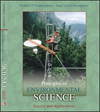Earth Resources: World Petroleum Supplies Understanding the distribution of world petroleum supplies is one of the most
current and urgent topics in environmental geology. The USGS monitors and assesses
world oil and gas supplies because they are such important commodities. Look
at the USGS
World Petroleum Assessment 2000. (this site is also accessible from the
main USGS energy page.)
Find selection box labelled "Maps Showing Geology, Oil & Gas," and select
a continent or region.
Where is the greatest concentration of oil and gas sites? Click on Geologic
Units below the map to see a key. What type of geologic features or ages are
associated with most of the oil or gas fields in the area you are looking at?
Understanding Volcanoes
USGS Hawaii Volcano Observatory is one of the most important places for understanding
volcanoes. Visit the observatory's web site, http://hvo.wr.usgs.gov/ 1. Which of the volcanoes discussed on this page is the largest in the world?
Which is the most active?
2. Why are earthquakes discussed on this volcano page?
3. What are the major hazards to people from these volcanoes?
(For a good collection of volcano images, go to the USGS Cascades Volcano Observatory,
http://vulcan.wr.usgs.gov/Photo/framework.html)
Evaluating Erosion on Farmland The Natural Resources Conservation Service (NRCS), part of the US Department
of Agriculture, is the agency that monitors agricultural resources and conditions.
Among their data gathering efforts, the NRCS produces a Natural Resources Inventory
(NRI), with maps of farmland conditions across the mainland U.S. Visit the NRCS/NRI
web site, http://www.nhq.nrcs.usda.gov/land/index/nri97maps.html#maps,
and find the list of Erosion maps. Look at several of the maps. First identify
the meaning of the colors. Then identify the major concentration of high and
low erosion rates.
1. Where is wind erosion worst? Water erosion?
2. Where are the most acres of highly erodible cropland? Discuss with other
students what kind of physical features might occur where these erodible lands
are.
| 


 2002 McGraw-Hill Higher Education
2002 McGraw-Hill Higher Education